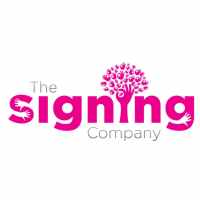Privacy and safety considerations for using LinkedIn
David Brock is the Managing Director of computer support and security company LetUsFixIt. Here, he shares his advice for protecting yourself against the risks you face when using LinkedIn.
If you are looking for a new job, searching for freelance projects, or simply want to connect with like-minded professionals, LinkedIn is a great platform to use. If you aren’t familiar with the networking site, it’s somewhere professionals can go to post personal and industry updates, scour job boards, and swap contacts. It’s an invaluable resource if you’re looking for the next step in your career.
However, like with any online platform that requires you to share some of your personal details, there are risks associated with using it. To help you stay safe while using LinkedIn, I’ve put together a list of three things you should keep in mind while creating and managing your profile. Read on to learn more.
Enable two-step verification
LinkedIn has suffered a number of security breaches over the last few years. Just last May, a hacker was trying to sell the account information — including email addresses and passwords — of 117 million users, according to Motherboard. Following the incident, LinkedIn asked all users to change their passwords and enable two-step verification. They have also learned from their mistakes and improved the ways in which they store users’ data.
I would always recommend changing your online passwords on a regular basis, and enabling two-step verification on as many of your profiles as possible. It’s often the best way to protect yourself against potential hackers.
To turn two-step verification on, navigate to LinkedIn’s Settings & Privacy page by selecting it from the drop-down menu in the top right hand corner, below your profile picture. Next, select the Privacy tab and scroll down to the Security section, where you’ll find the option to turn two-step verification on. When you click Change, you’ll be asked to enter your phone number. This will allow LinkedIn to text you a security code whenever you try to login, which will significantly improve your level of security.
Limit the amount of personal information you share
We’re typically more willing to accept new connections on LinkedIn than the likes of Facebook, because we’re all looking to build a network of professional contacts. But, you need to consider whether you’re happy for these potential strangers to have access to the likes of your phone number or address.
At most, I would recommend displaying your email address in the contact section of your profile. This will still offer people a way to contact you without giving away too much of your information.
However, even if you hide most of your contact information from your profile, there might still be sensitive information that hackers and criminals could use. For example, listing a college or university you’re currently attending could tip them off to your current whereabouts. Therefore, you should only include the most relevant information on your profile. Then, if you hear about a job or opportunity you’re interested in, you can send any additional information as part of your official application. This way, you won’t be giving away too many personal details unnecessarily.
Review your privacy settings
If you don’t change your privacy settings after creating your profile, your connections will be alerted if you’ve visited their profile, and will be able to see your activity feed.
If you’re uncomfortable with people knowing when you’ve viewed their profile, you can choose to browse anonymously instead. Do this by navigating to your privacy settings and scrolling down to the profile viewing options section. When you click on this, you’ll see that it’s currently set to show your name and headline. You can then edit it to show that you’re an anonymous employee of the company you work at, or choose not to show any of your information at all. However, you should know that choosing the latter option will also stop you from seeing when people have visited your profile.
On the privacy settings page, you can also decide who sees your activity, whether other users can see your connections, and even whether your surname is displayed on your profile. Only you can decide how much information you would like to make available, but the fewer personal details you publish, the safer you will be.
Keep these three consideration in mind and you’ll be able to browse LinkedIn safely and securely. It’s a fantastic resource for professionals and, if you use it correctly, it could help you to take the next step in your career without any problems.
Find more Flexible Working Advice here.
Role of the Week
The Signing Company

Location: UK Wide
The Signing Company is a Deaf led company that has been created to provide sign language opportunities for all. With sign language now being a valuable and sought-after tool to enrich communication...
Find out More






